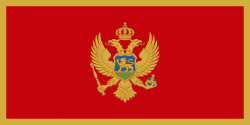Bijela (Bijela)
Bijela (Serbian Cyrillic: Бијела, ) is a coastal town in the municipality of Herceg Novi, Montenegro. It is also located north of Herceg Novi, by the Verige strait in the Bay of Kotor.
The chronicler Andrija Zmajević claimed that the 16th-century Pope Sixtus V descended from a family originating in the area of Bijela. He also stated that the future Pope's father, Piergentile di Giacomo, was born in the village Bjelske Kruševice near Bijela and moved to Italy to escape the Ottoman conquest.
The 2003 census recorded a population of 3,748.
According to the 2011 census, its population was 3,691.
The chronicler Andrija Zmajević claimed that the 16th-century Pope Sixtus V descended from a family originating in the area of Bijela. He also stated that the future Pope's father, Piergentile di Giacomo, was born in the village Bjelske Kruševice near Bijela and moved to Italy to escape the Ottoman conquest.
The 2003 census recorded a population of 3,748.
According to the 2011 census, its population was 3,691.
Map - Bijela (Bijela)
Map
Country - Montenegro
 |
 |
| Flag of Montenegro | |
During the Early Medieval period, three principalities were located on the territory of modern-day Montenegro: Duklja, roughly corresponding to the southern half; Travunia, the west; and Rascia proper, the north. The Principality of Zeta emerged in the 14th and 15th centuries. From the late 14th century to the late 18th century, large parts of southern Montenegro were ruled by the Venetian Republic and incorporated into Venetian Albania. The name Montenegro was first used to refer to the country in the late 15th century. After falling under Ottoman Empire rule, Montenegro gained its semi-autonomy in 1696 under the rule of the House of Petrović-Njegoš, first as a theocracy and later as a secular principality. Montenegro's independence was recognised by the Great Powers at the Congress of Berlin in 1878. In 1910, the country became a kingdom.
Currency / Language
| ISO | Currency | Symbol | Significant figures |
|---|---|---|---|
| EUR | Euro | € | 2 |
| ISO | Language |
|---|---|
| SQ | Albanian language |
| BS | Bosnian language |
| HR | Croatian language |
| HU | Hungarian language |
| SR | Serbian language |















